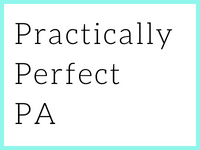Big Picture Thinking for Assistants
As an Assistant, it’s easy to get lost in the details of your daily tasks. With so many different responsibilities and the constant demand for your attention, it can be challenging to step back and see the bigger picture. However, big-picture thinking is crucial for Assistants who want to improve their strategic thinking and become more valuable to their Executives and Organisations.
Understanding the Bigger Picture
Big-picture thinking involves looking beyond the immediate tasks and understanding how they fit into the broader context of the organisation’s goals and strategy. It’s about balancing the day-to-day demands of your time and the bigger picture. This includes the goals or objectives you are working towards and the risks that affect these goals.
To develop big-picture thinking, you need to understand the Organisation and its overall strategy really well. You also need to find the time to think about the big picture. This may involve blocking off time in your calendar for planning and thinking about the bigger picture. This time should be scheduled when you are at your most creative and least likely to be interrupted. So, let’s look at this in more detail. How do you move your mindset from being focused on the work at hand to being able to spend that time looking at strategic, bigger-picture initiatives?
Understand the Organisation’s Mission, Vision, and Values
Begin with thoroughly understanding the company’s mission, vision, and values. These foundational elements dictate the organisation’s overall direction and priorities. Assistants should review company literature, internal documents, and strategic plans to align their understanding.
Don’t hesitate to ask your Executive about how broader projects and strategies align with the company’s goals. This will provide context for understanding the importance of various initiatives. And just to reiterate, context is so important for Assistants. Your Executive should always try to give you the context of why you are doing things.
Learn About the Organisation’s Strategy
Engage in formal and informal learning opportunities about the industry and the specific strategies the Organisation is employing. This can include workshops, meetings, and industry events.
Seek opportunities to work with or shadow different departments. Talk to other Assistants within the organisation to learn about the challenges they face in the projects they are moving forward with. This exposure will offer insights into how various functions contribute to the overall strategy.
Develop a Strategic Mindset
Regularly practice critical thinking by questioning how and why things are done within the organisation. More on this later. Also, consider what external factors could impact the Organisation’s strategy and objectives.
Engage in scenario planning exercises, even on a small scale, to anticipate potential future challenges and opportunities. This will help you to understand the broader implications of current actions and decisions.
Implement Big-Picture Thinking in Daily Tasks
Use your understanding of the Organisation’s goals to prioritise your tasks. Ask yourself how each task supports the broader objectives and adjust your focus accordingly.
Approach problems with a solution-oriented mindset that takes into account the long-term impact on the Organisation. Propose solutions that solve the immediate issue and align with strategic goals.
Communicate Strategically
Ensure that your communication, whether it’s reports, emails, or presentations, reflects an understanding of the Organisation’s strategy. Highlight how your work and your team’s work align with broader objectives.
Provide feedback and recommendations that are informed by your big-picture understanding. Offer insights that may not be immediately obvious to others focused on their specific areas.
Schedule Time for Strategic Thinking
As initially suggested, block off time in your calendar specifically for strategic thinking and planning. Use this time not just for reflection but also to review industry trends, analyze competitors, and consider the Organisation’s position within the broader market.
Identify when and where you are most creative and least likely to be interrupted. Use these times and spaces to think deeply about strategic issues and develop innovative approaches to your work.
Gaining Perspective
Gaining perspective is a crucial part of big-picture thinking. It’s about stepping back from the day-to-day running of your role and looking at things from a different angle. This can be challenging because we are often so involved in the details that we forget to zoom out and see the bigger picture.
Think about it like this: when you’re in a queue in a shop, and there’s only one person at the till, you start to notice everything going wrong. You see the mess in the corner, the wrong items paired together, the changing room full of stock, and the growing queue. This is an outside-in perspective, where you can see the actions being taken and where things are going wrong.
In your day-to-day work, you usually have an inside-out perspective, where you are heavily focused on the details and too close to the work to notice things going wrong or areas for improvement. Taking the time to look at the bigger picture gives you that outside-in perspective, which is essential for strategic thinking.
Asking the Right Questions
To build your big-picture thinking, you can ask yourself a series of questions that help put the context of your work into perspective. These questions include:
- What is the context?
- What matters most?
- What is the purpose of this?
- What is at stake?
- Why is the task worth doing?
- Does this fit my or my executive’s goals and objectives?
These questions will help ensure that you are on the right track and that your work aligns with the bigger picture. They also help you move from merely having information to building ideas and insights, which is a crucial part of strategic thinking.
Big-picture thinking is essential for assistants who want to improve their strategic thinking. It involves understanding the broader context of your work, gaining perspective, and asking the right questions to ensure alignment with the bigger picture. By taking the time to think about the bigger picture, you can become a more valuable asset to your executive and organisation, contributing to the strategic growth of the business and your executive’s success.
If you’re an Assistant looking to develop your strategic thinking skills further and become a more effective business partner, consider enrolling in The Strategic Business Partner Online Course. This comprehensive course will provide you with the tools and insights you need to think more strategically, align your work with the organisation’s goals, and significantly impact your executive’s success. Don’t miss this opportunity to enhance your skills and take your career to the next level. Enrol in The Strategic Business Partner Online Course today!





